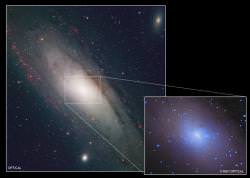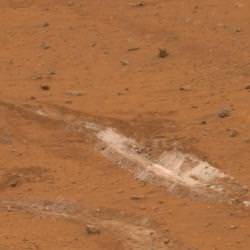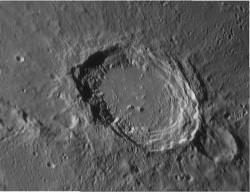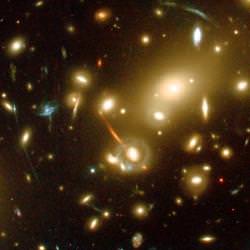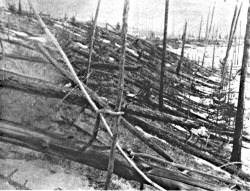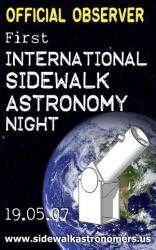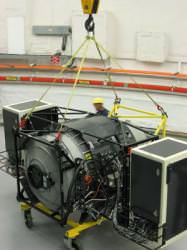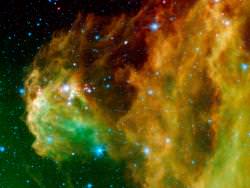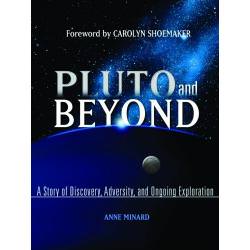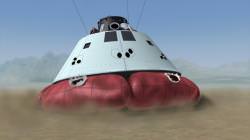Monday, May 21 – In 1961, United States President John F. Kennedy launches the country on a journey to the Moon as he makes one of his most famous speeches to Congress: “I believe this nation should commit itself to achieving the goal, before this decade is out, of landing a man on the Moon and returning him safely to Earth. No single space project in this period will be more impressive to mankind, or more important for the long-range exploration of space…”
Tonight let’s take our own journey to the Moon as we look at a beautiful series of craters – Fabricius, Metius and Rheita.
Bordered on the south by shallow Jannsen, lunar club challenge Fabricius is a 78 kilometer diameter crater highlighted by two small interior mountain ranges. To its northeast is Metius, which is slightly larger with a diameter of 88 kilometers. Look carefully at the two. Metius has much steeper walls, while Fabricius shows differing levels and heights. Metius’ smooth floor also contains a very prominent B crater on the inside of its southeast crater wall.
Further northeast is the lovely Rheita Valley which stretches almost 500 kilometers and appears more like a series of confluent craters than a fault line. 70 kilometer diameter crater Rheita is far younger than this formation because it intrudes upon it. Look for a bright point inside the crater which is its central peak.
While the Moon is still west, let’s have a look at telescopic star W Virginis located about three and a half degrees southwest of Zeta (RA 13 26 01.99 Dec -03 22 43.4). This 11,000 light-year distant Cepheid type variable is oddly enough a Population II star that lies outside the galactic plane. This expanding and contracting star goes through its changes in a little over 17 days and will vary between 8th and 9th magnitude. Although it is undeniably a Cepheid, it breaks the rules by being both out of place in the cosmic scheme and displaying abnormal spectral qualities!
Tuesday, May 22 – Tonight the Moon will be our companion. Now well risen above atmospheric disturbance, this would be a great time to have a look for several lunar club challenges that you might have missed.
Most prominent of all will be two craters to the north named Atlas and Hercules. The eastern-most Atlas was named for the mythical figure which bore the weight of the world on his shoulders, and the crater spans 87 kilometers and contains a vivid Y-shaped rima in the interior basin. Western Hercules is considerably smaller at 69 kilometers in diameter and shows a deep interior crater called G. Power up and look for the tiny E crater which marks the southern crater rim. North of both is another unusual feature which many observers miss. It is a much more eroded and far older crater which only shows a basic outline and is only known as Atlas E.
Since we’re here, let’s take a crater walk and see how many features we can identify. Good luck and clear skies!
(1) Mare Humboldtianum, (2) Endymion, (3) Atlas, (4) Hercules, (5) Chevalier, (6) Shuckburgh, (7) Hooke, (8) Cepheus, (9) Franklin, (10) Berzelius, (11) Maury, (12) Lacus Somniorum, (13) Daniel, (14) Grove, (15) Williams, (16) Mason, (17) Plana, (18) Burg, (19) Lacus Mortis, (20) Baily, (21) Atlas E, (22) Keldysh, (23) Mare Frigoris, (24) Democritus, (25) Gartner, (26) Schwabe, (27) Thales, (28) Strabo, (29) de la Rue, (30) Hayn.
Wednesday, May 23 – Tonight no two lunar features in the north will be more prominent than Aristoteles and Eudoxus. Viewable even in small binoculars, let’s take a closer look at larger Aristoteles to the north.
As a Class 1 crater, this ancient old beauty has some of the most massive walls of all lunar features. Named for the great philosopher, it stretches across 87 kilometers of lunar landscape and drops below the average surface to a depth of 366 meters – a height which is similar to Earth’s tallest waterfall, the Silver Cord Cascade. While it has a few scattered interior peaks, the crater floor remains almost unscarred. As a telescopic lunar club challenge, be sure to look for a much older crater that sits on Aristoteles eastern edge. Tiny Mitchell is extremely shallow by comparison and only spans 30 kilometers. Look carefully at the formation, for although Aristoteles overlaps Mitchell, the smaller crater is actually part of the vast system of ridges which supports the larger.
Now let’s have a look at Iota Virginis. While there is nothing particularly special about this spectral F type star, it does reside in a very interesting field for low power. Enjoy the colors!
Thursday, May 24 – While the Moon moves quietly towards Virgo, our first challenge for the evening will be a telescopic one on the lunar surface known as the Hadley Rille. Using our past knowledge of Mare Serenitatis, look for the break along its western shoreline that divides the Caucasus and Apennine mountain ranges. Just south of this break is the bright peak of Mons Hadley. You’ll find this area of highest interest for several reasons, so power up as much as possible.
Impressive Mons Hadley measures about 24 by 48 kilometers at its base and reaches up an incredible 4572 meters. If this mountain was indeed caused by volcanic activity on the lunar surface, this would make it comparable to some of the very highest volcanically caused peaks on Earth, such as Mount Shasta or Mount Rainer. To its south is the secondary peak Mons Hadley Delta – the home of the Apollo 15 landing site just a breath north of where it extends into the cove created by Palus Putredinus.
Along this ridgeline and smooth floor, look for a major fault line known as the Hadley Rille, winding its way across 120 kilometers of lunar surface. In places, the rille spans 1500 meters in width and drops to a depth of 300 meters below the surface. Believed to have been formed by volcanic activity some 3.3 billion years ago, we can see the impact that lower gravity has had on this type of formation, since earthly lava channels are less than 10 kilometers long and only around 100 meters wide.
During the Apollo 15 mission, Hadley Rille was visited at a point where it was only 1.6 kilometers wide – still a considerable distance as seen in respect to astronaut James Irwin and the lunar rover. Over a period of time, its lava may have continued to flow through this area, yet it remains forever buried beneath years of regolith.
Friday, May 25 – Tonight on the Moon we’ll be looking for another challenging feature and a crater which conjoins it – Stofler and Faraday.
Located along the terminator to the south, crater Stofler was named for Dutch mathematician and astronomer Johan Stofler. Consuming lunar landscape with an immense diameter of 126 kilometers and dropping 2760 meters below the surface, Stofler is a wonderland of small details in an eroded surrounding. Breaking its wall on the north is Fernelius, but sharing the southeast boundary is Faraday.
Named for English physicist and chemist Michael Faraday, it is more complex and deeper at 4090 meters, but far smaller at 70 kilometers in diameter. Look for myriad smaller strikes which bind the two together!
When you’re done, let’s have a look at another delightful pair that’s joined together – Gamma Virginis…
Better known as Porrima, this is one cool binary with almost equal spectral types and brightnesses. Discovered by Bradley and Pound in 1718, John Herschel was the first to predict this pair’s orbit in 1833 and state that one day they would become inseparable to all but the very largest of telescopes – and he was right. In 1920 the A and B stars had reached their maximum separation, and during 2007 they will be as close together as they will ever be. Observed as a single star in 1836 by William Herschel, its 171 year periastron will put Porrima in the exact position now as it was when Sir William saw it!
Saturday, May 26 – Are you ready to explore some more history? Then tonight have a look at the Moon and identify Alphonsus – it’s the centermost in a line of rings which looks much like the Theophilus, Cyrillus and Catharina trio.
Alphonsus is a very old, Class V crater which spans 118 kilometers in diameter and drops below the surface by about 2730 meters and contains a small central peak. Partially flooded, Eugene Shoemaker had made of study of this crater’s formation and found dark haloes on the floor. Again, this could be attributed to volcanism and Shoemaker believed them to be maar volcanoes, and the haloes to be dark ash. Power up and look closely at the central peak, for not only did Ranger 9 hard land just northeast, but this is the only area on the Moon where an astronomer has observed a change and back up that observation with photographic proof.
On November 2, 1958 Nikolai Kozyrev’s long and arduous study of Alphonsus was about to be rewarded. Some two years earlier Dinsmore Alter had taken a series of photographs from the Mt. Wilson 60″ reflector that showed hazy patches in this area that could not be accounted for. Night after night, Kozyrev continued to study at the Crimean Observatory – but with no success. During the process of guiding the scope for a spectrogram the unbelievable happened – a cloud of gas containing carbon molecules had been captured!
Selected as the last target for the Ranger photographic mission series, Alphonsus delivered 5814 spectacular high-resolution images of this mysterious region before Ranger 9 splattered nearby.
Capture it yourself tonight!
Sunday, May 27 – As we begin the evening, let’s have a look at awesome crater Clavius. As a huge mountain-walled plain, Clavius will appear near the terminator tonight in the lunar southern hemisphere, rivaled only in sheer size by similar structured Deslandres and Baily. Rising 1646 meters above the surface, the interior wall slopes gently downward for a distance of almost 24 km and a span of 225 km. Its crater-strewn walls are over 56 km thick!
Clavius is punctuated by many pockmarks and craters; the largest on the southeast wall is named Rutherford. Its twin, Porter, lies to the northeast. Long noted as a test of optics, Clavius crater can offer up to thirteen such small craters on a steady night at high power. How many can you see?
If you want to continue with tests of resolution, why not visit nearby Theta Virginis? It might be close to the Moon, but it’s 415 light-years away from Earth! The primary star is a white A-type subgiant, but it’s also a spectroscopic binary of two companions which orbit each other about every 14 years. In turn, this is orbited by a 9th magnitude F-type star which is a close 7.1 arc-seconds away from the primary. Look for the fourth member of the Theta Virginis system well away at 70 arc-seconds, but shining at a feeble magnitude 10.4.

